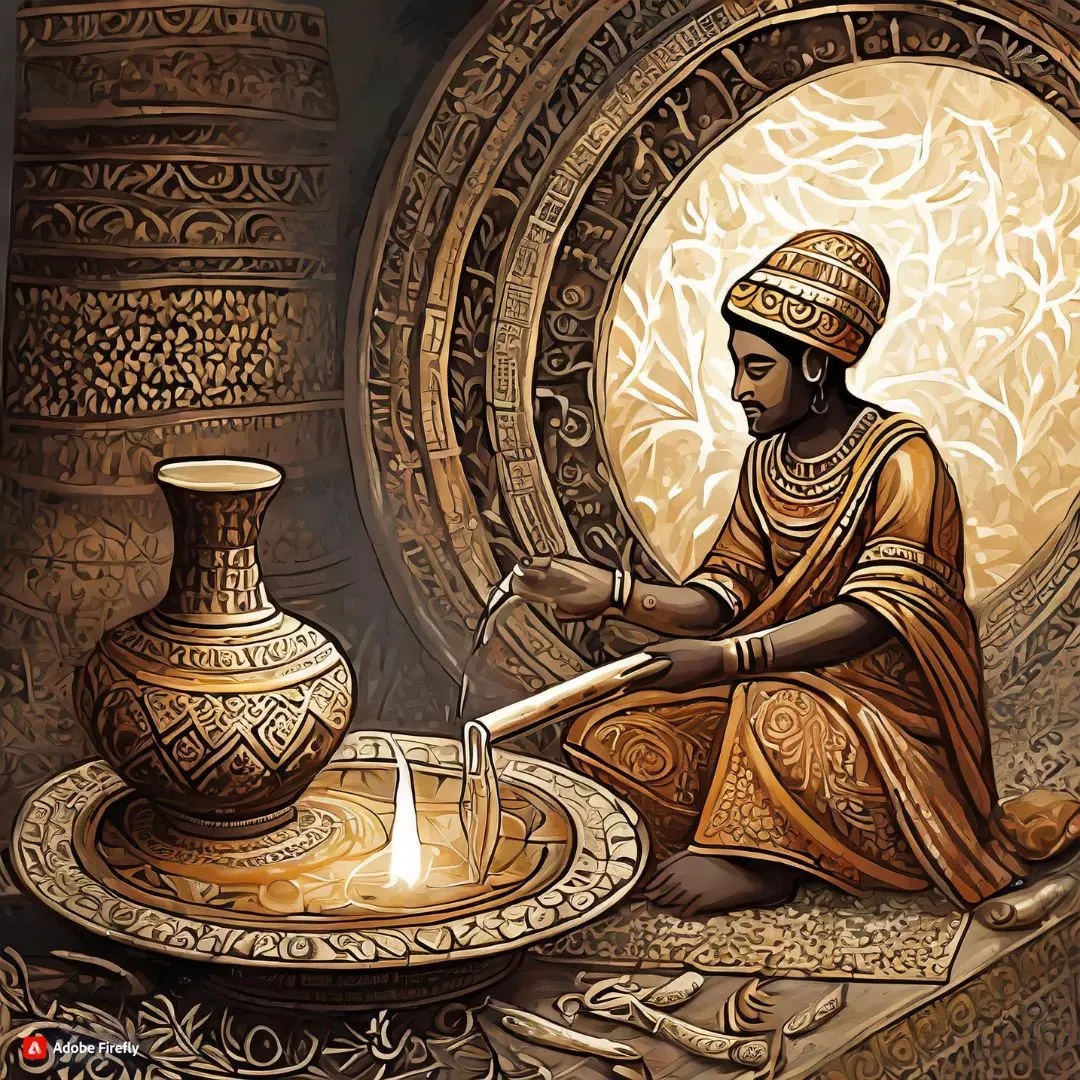Originating in the 14th century under the Bahmani Sultans’ rule in Bidar, Karnataka, Bidriware is a distinguished metal handicraft that has woven itself into the cultural fabric of India. The name “Bidriware” stems from its birthplace, Bidar, which remains the primary center for crafting this unique metalware. Today, this native art form holds a Geographical Indications (GI) registry, securing its historical significance and cultural importance.
The genesis of Bidriware is often attributed to the Bahmani Sultans, with Persian art leaving an indelible mark on its techniques and style. Sufi Khwaja Moinuddin Hasan Chisti introduced Bidriware to India in the form of utensils during the Mughal era. The craft flourished in the blend of Turkish, Persian, and Arabic influences within the kingdom, resulting in a distinctive style. The partnership between Iranian craftsman Abdullah bin Kaiser and local artisans further fueled the spread of Bidriware across generations.
Bidri artisans have gained national and international recognition, showcasing their skills in various exhibitions. A notable figure, Shah Rasheed Ahmed Quadari, received prestigious awards, including the Padma Shri in 2023. The craft has become a source of livelihood for skilled artisans like Syed Tassaduq Hussain and continues to thrive with their dedication.
The meticulous eight-stage process involved in creating Bidriware reflects the artisans’ commitment to their craft. From molding and smoothening to engraving, silver inlaying, and final oxidization, each step is performed by hand. The use of blackened white brass and pure silver inlay results in the characteristic black and silver contrast that defines Bidriware.
Bidriware employs various techniques such as tarkashi, tainishan, zarnishan, Zarbuland, and aftabi, with craftsmen often combining multiple techniques. The motifs draw inspiration from Persian, Southern Indian, and European influences, featuring floral and geometric designs. While traditionally used for hookahs and vases, modern Bidriware includes diverse items like USB drive covers, office stationeries, and floor tiles.
The soil from a 15th-century fort in Bidar plays a crucial role in the final stages of Bidriware production. Rich in alkaline nitrates, this soil, selected by taste, contributes to the creation of the distinctive black patina during the oxidation process.
Bidriware is experiencing a revival with innovative designs and a broader range of patterns, appealing to a younger audience. Institutions like the National Institute of Fashion Technology (NIFT) contribute to the evolution of Bidriware, introducing contemporary items such as USB drive covers, lampshades, and more.
While Bidar and Hyderabad remain vibrant centers, Bidriware is also practiced in places like Purnia, Lucknow, and Murshidabad, showcasing conventional designs with regional variations. Aurangabad, introduced to Bidri art by the Nizam of Hyderabad, has seamlessly integrated it into its rich artistic legacy.
Bidriware’s journey from the historical courts of Bahmani Sultans to the hands of modern artisans is a testament to India’s enduring artistic heritage. As the craft evolves and adapts to contemporary tastes, its cultural significance remains intact, resonating through the meticulous craftsmanship of each Bidriware creation.












